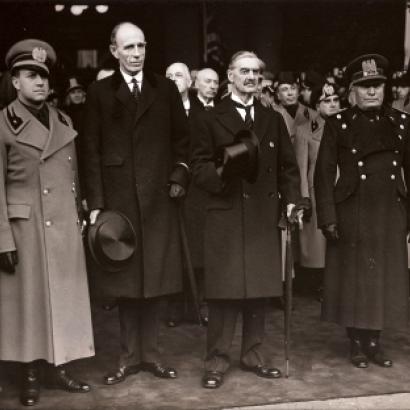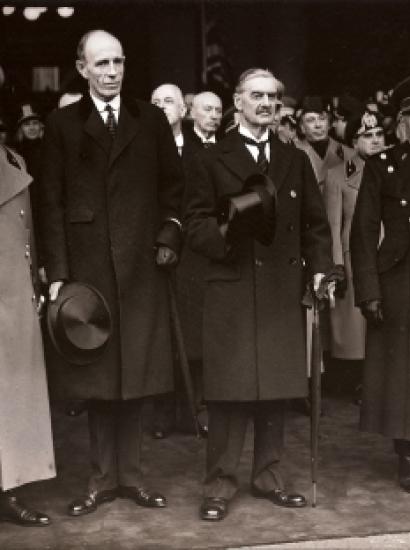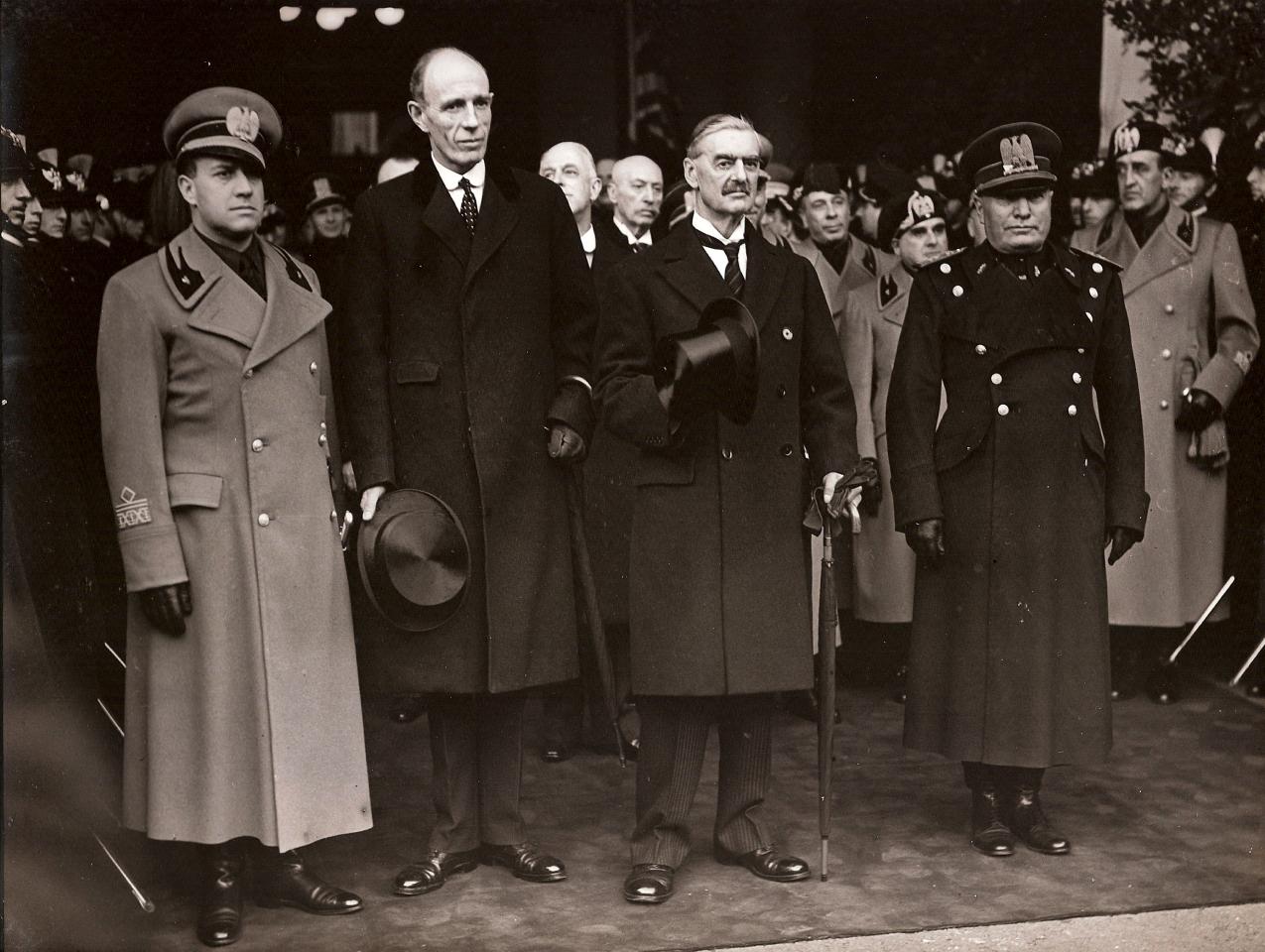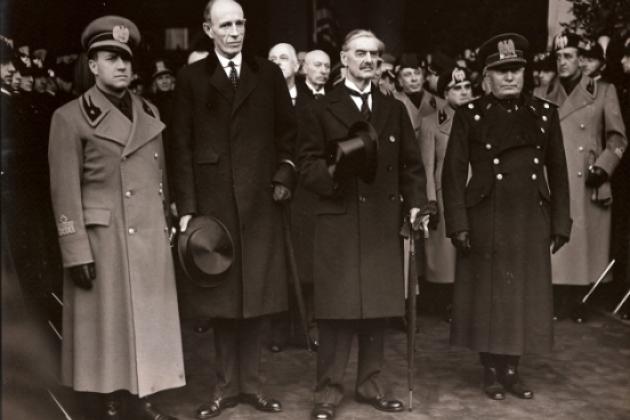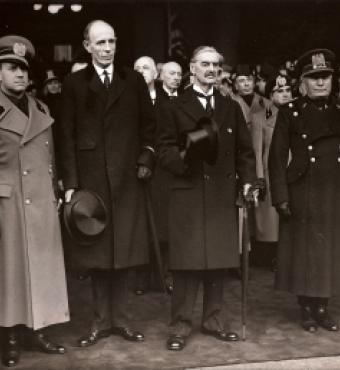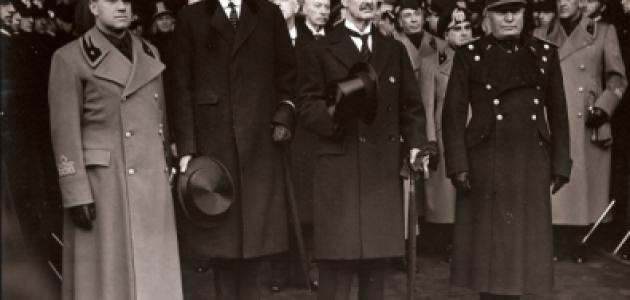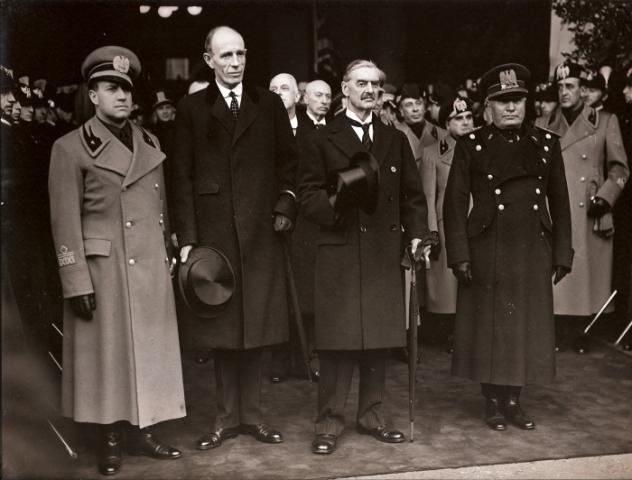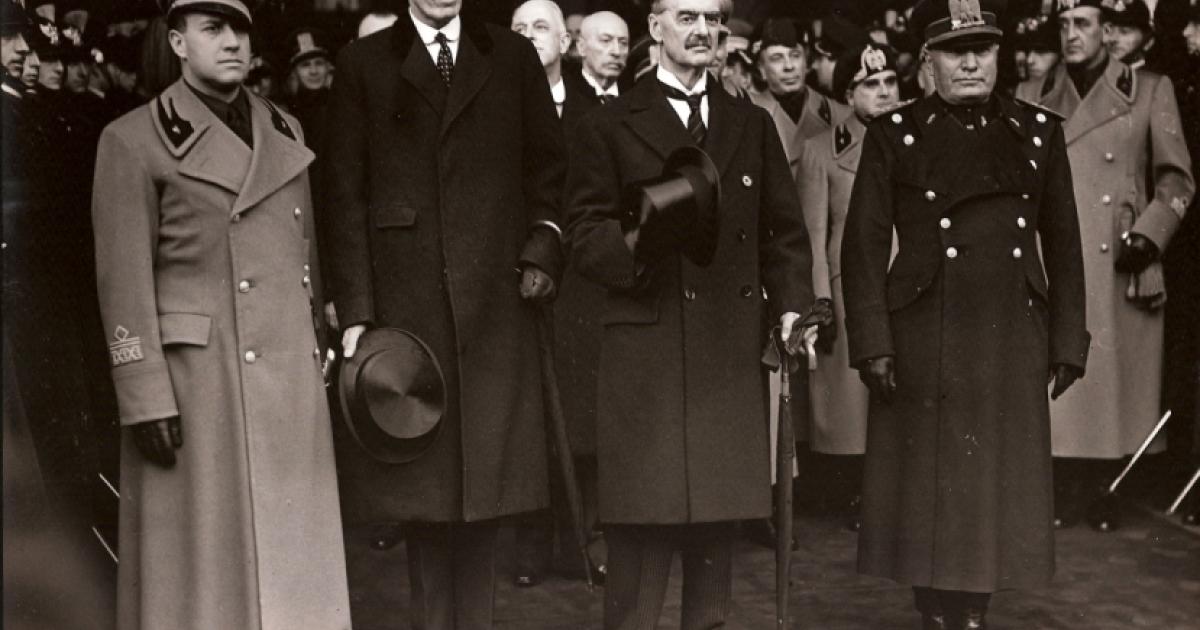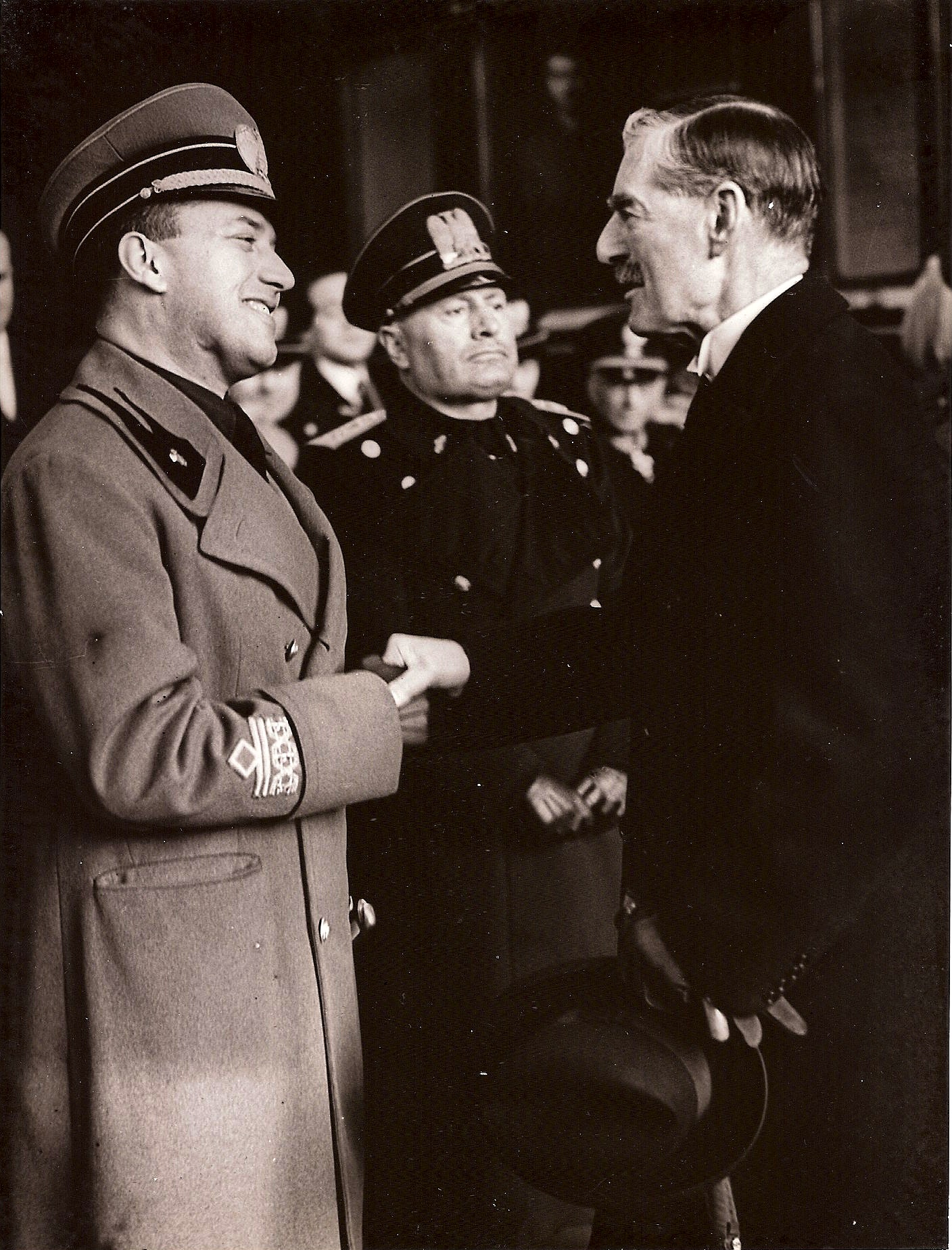
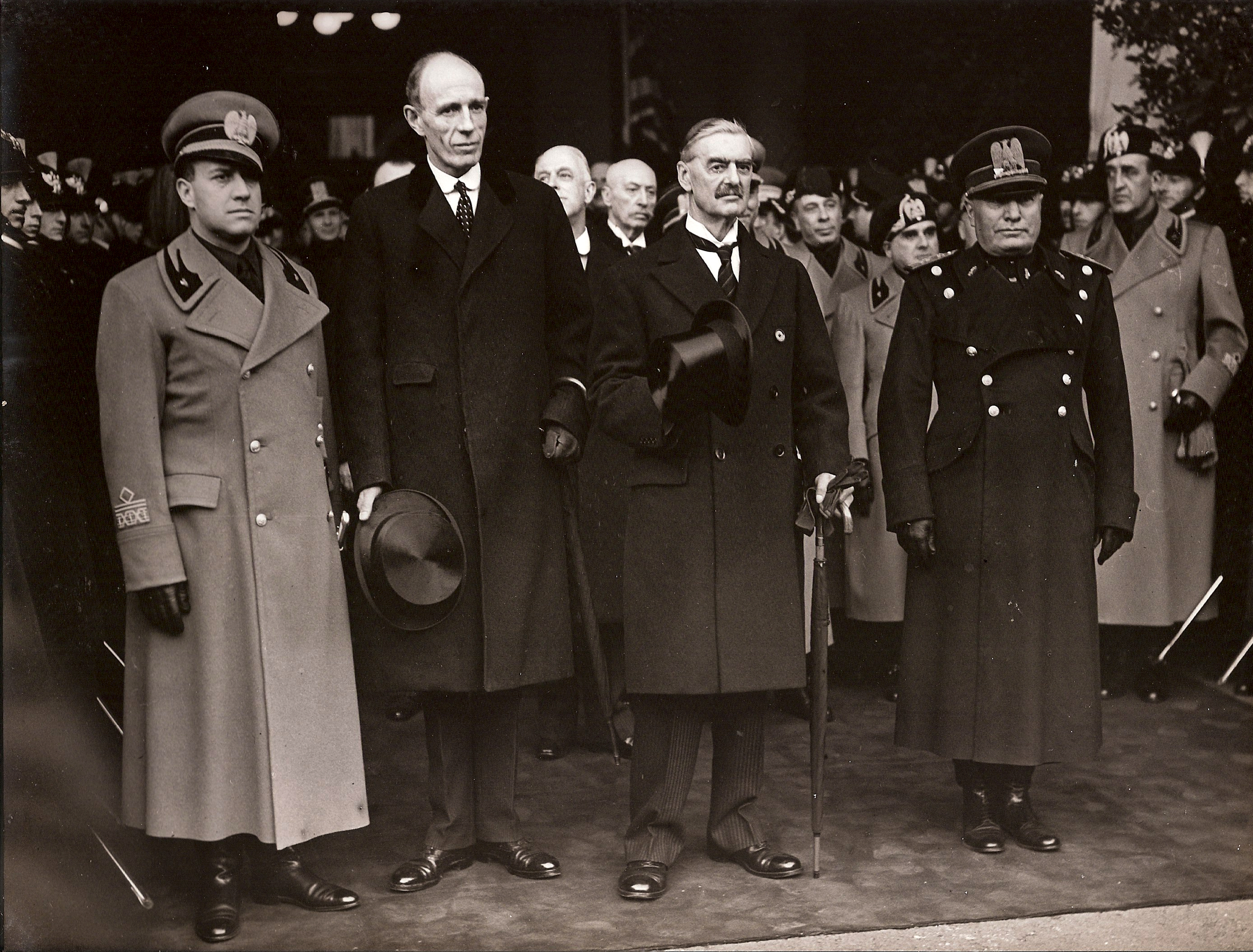
Three and a half months after signing the infamous Munich Agreement that opened the way for Hitler’s occupation of Czechoslovakia, UK prime minister Neville Chamberlain and UK foreign secretary Lord Halifax visited Rome to confer with Italian premier Benito Mussolini, hoping to find some way to appease the Italians and maintain the status quo in the Mediterranean.
That January 11–14, 1939 visit was the last official attempt by the UK government to bring Italy into the Allied sphere before war broke out with Germany eight months later. Although the visit did not produce the political results desired by Chamberlain and Halifax, it nonetheless yielded a fascinating album of forty-nine high-quality photos documenting the trip now available at the Hoover Archives.
The Chamberlain-Halifax visit was characterized well in the diary of Mussolini’s son-in-law and foreign minister, Count Galeazzo Ciano: “In substance, the visit was kept on a minor tone, since both the Duce [Mussolini] and myself are scarcely convinced of its utility. . . . How far apart we are from these people! It is another world. We were talking about it after dinner with the Duce . . . . ‘These men are not made of the same stuff,’ he was saying, ‘as the Francis Drakes and the other magnificent adventurers who created the Empire. These, after all, are the tired sons of a long line of rich men, and they will lose their Empire.’. . . .The British do not want to fight. They try to draw back as slowly as possible, but they do not want to fight. . . .Our conversations with the British have ended. Nothing was accomplished. I have telephoned Ribbentrop that the visit was a ‘big lemonade’ [farce].”*
The album was compiled by Istituto Nazionale Luce, Mussolini’s department for audiovisual documentation and propaganda, but the fact that the photographs have no captions suggests that no more than several copies were produced, most likely for Mussolini and for his top associates who participated in the visit’s program. The Hoover Institution Archives holds a number of photo albums of major European leaders of the 1930s. Among these, the Nestor Lakoba album on Stalin and his associates, as well as the two albums from the September 1939 visit of Joachim Ribbentrop to Moscow, are already well known. The 1939 Rome album is a fine addition to this select group of visual primary sources.
For additional information, contact Maciej Siekierski at siekierski@stanford.edu.




